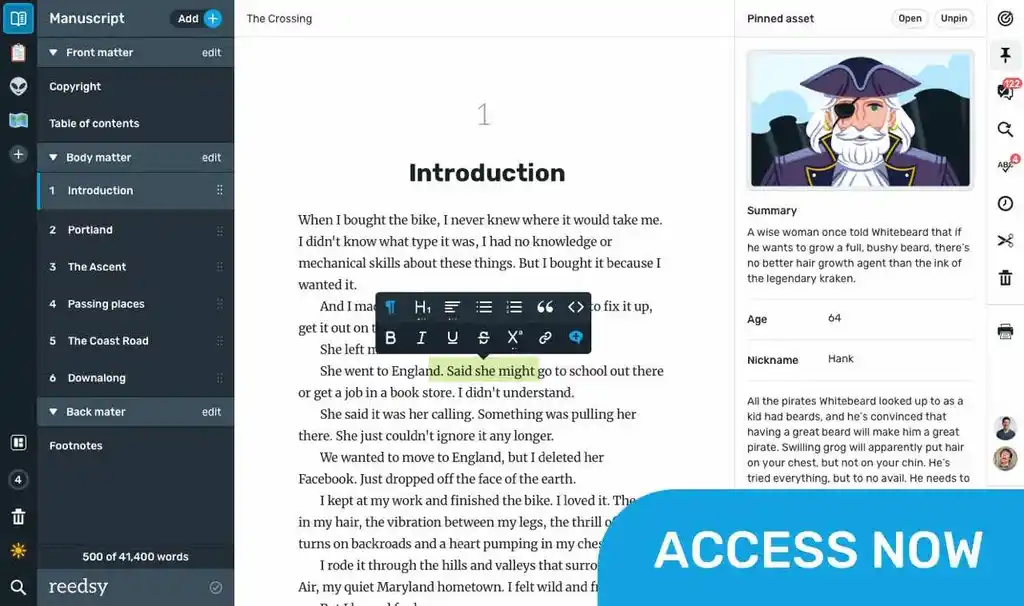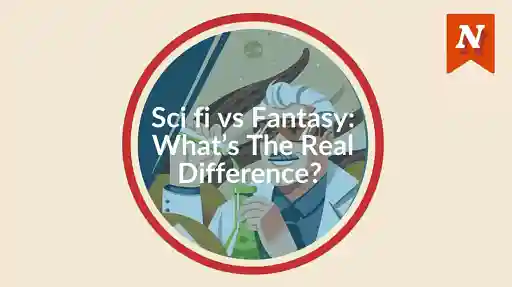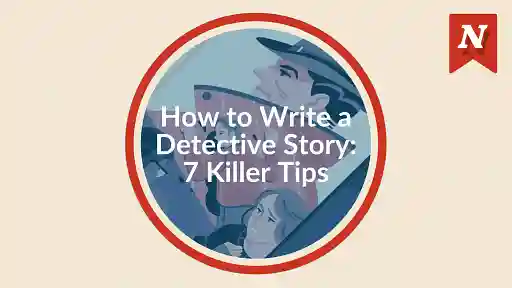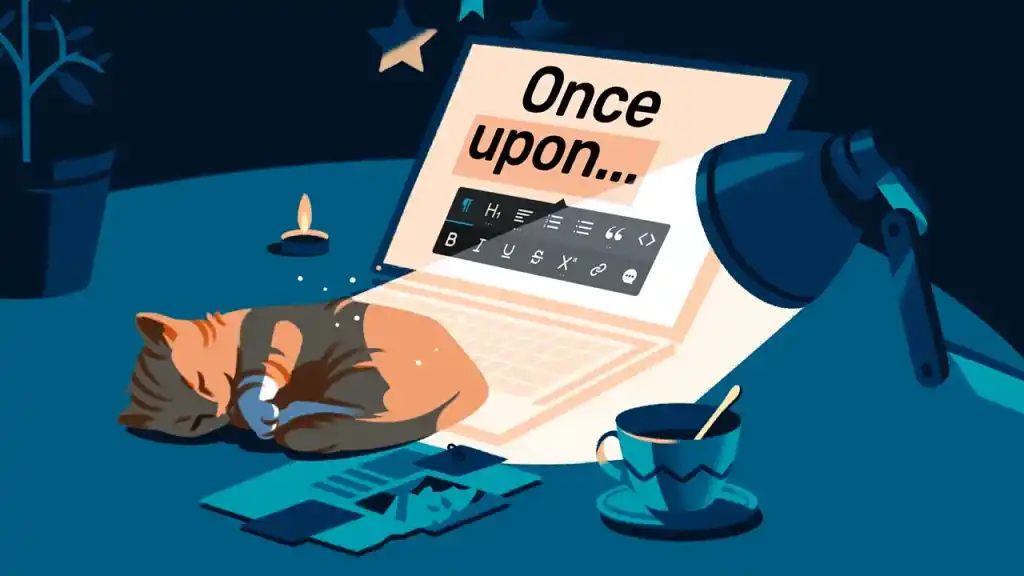Dystopian fiction is set in a future in which things have not gone well for humanity. The characters face hardships like extreme surveillance, censorship, oppression, or catastrophic climate change — in other words, what dystopian writers imagine the future might hold if we (continue to) make the wrong decisions.
Thankfully, none of the classic dystopian novels from the first half of the 20th century have come true — but we’ve developed so many new problems since then that we can now create fresh dystopian futures of an even bleaker (and possibly more realistic) nature!
If you want to throw your own speculations into the mix, here’s how to write a thought-provoking dystopian story.
1. Find a problem in today’s society
Even though they may seem a little far-fetched, at least within our lifetime, the most haunting dystopian novels are the ones that feel like they could eventually come to pass because they build on current real-world problems.
To create your own chillingly possible future, you first need to examine the present. Identify an issue in modern society that you think could lead to terrible consequences if left unchecked. Unfortunately, today’s dystopian authors are spoiled for choice, from the rise of the far right to the melting ice caps to excessive screen time.
Dave Eggers was inspired by data tracking for his 2013 novel The Circle. The titular company is a massive technological corporation that holds vast amounts of information on everyone and plans to improve “transparency” by video recording citizens 24/7. It’s not hard to see where Eggers’ inspiration came from; even back in 2013, Google and other tech companies were already collecting all sorts of data on users, sparking concerns about personal privacy.
Like Eggers, the best way to identify your problem is to look around you, read the news, and see what’s happening that could spiral out of control.
2. Extrapolate the problem to create a plausible future
Once you have your problem, ask yourself what could happen that would make it worse. Keep extrapolating it little by little until you end up with a worst-case-scenario future. To make readers reflect on the gravity of the issue today, you must convince them that your scenario is a plausible future consequence, so make sure there is a logical chain of cause and effect.
Ernest Cline’s Ready Player One describes a future in which humanity spends as much time in a virtual reality as possible, ignoring their problems in the real world. This came about in the 21st century as immersive gaming got a lot more realistic, a lot more comfortable, and a lot cheaper, while the real world suffered from climate change, scarce resources, and endless wars. In the virtual world, you can not only escape from this harsh reality, but everyone is equal and you can be anyone you like — or so people believe. This chain of cause and effect is so believable that it makes the story feel scarily possible.
Another way to keep your ideas grounded is to draw inspiration from history. In The Handmaid’s Tale by Margaret Atwood, a future America, renamed Gilead, forces women to bear children. This practice echoes past civilizations, from as long ago as biblical times to as recently as Ceaușescu’s Romania. History is prone to repeat itself, so a return to this ideology might not seem outlandish at all, in the right circumstances.
As long as you can provide a convincing backstory, your future can be as wacky as you like. Maybe Roombas get so intelligent that they develop consciousness, form a union, stage an uprising, and ultimately end up establishing an ultra-clean society which is blemished only by the humans who haven’t yet been killed.
3. Choose a central conflict that forefronts your world’s issues
Having spent all this time building a watertight dystopia in which vacuum cleaners rule the world, you might be tempted to share every little detail of your dystopia with your readers. Bad idea! Dumping large amounts of information on the reader is likely to be overwhelming and/or boring. Instead, focus your efforts on coming up with an engaging story that will allow you to reveal how your world works through your characters’ actions, thoughts, and dialogue. After all, without a proper story, you’re just babbling on about a place you’ve made up.
A compelling story needs a strong central conflict. In dystopian fiction, this conflict should highlight the issues faced by your future world. The majority of dystopian novels share the same basic conflict: an individual or small group fighting against the system. This includes Bernard/John vs. the World State in Aldous Huxley’s Brave New World and Winston vs. the Party in George Orwell’s 1984. Such conflicts show us the world through the eyes of a disillusioned or malcontent protagonist, which is an effective way to foreground the problems in your dystopia.
However, you can also criticize your world more subtly. Kazuo Ishiguro’s Never Let Me Go is set in a future in which (spoiler alert) humans are cloned for the sole purpose of organ donation. Ishiguro imagines what life would be like for the clones as they try to find meaning in their unnaturally short time on Earth. Rather than show the clones rebel against authority as in the 2005 film The Island, Ishiguro chooses to document one ordinary clone’s life from her early years to adulthood — yet the human portrayal of the clones leave us in no doubt as to the brutality of the society’s cloning program.
The advantage of not focusing on a big showdown between the protagonist and the system is that you can explore a broader range of topics. In Ishiguro’s case, he not only examines the (im)morality of human cloning, but also the universal themes of mortality, societal expectations, and even love.
4. Give your hero relatable goals
If you’re anything like me, you’re not a clone struggling to come to terms with your doomed existence. You’re probably also not seriously planning to overthrow the government (however much you might fantasize about it).
The average reader just doesn’t know what it’s like to feel a duty to save the world from imminent catastrophe no matter what the personal cost. But most people do know how it feels to want to protect their family, impress a crush, or give their kids a better life. Grant your protagonist at least one such universally relatable goal to allow your readers to connect with the character on an emotional level.
Katniss Everdeen from The Hunger Games trilogy doesn’t set out to be the symbol of a revolution. She simply wants to survive and protect her loved ones — an instinct shared by just about everyone throughout history. Because Katniss comes with flaws like her emotional coldness and trust issues, we don’t see her as an unrealistically perfect hero, but as someone who could be us in very different circumstances. This makes us, the reader, more invested in her fate — and angrier at the dystopian government that oppresses her.
5. Finish with a believable ending
The fate of the protagonist can be bleak in dystopian fiction. Winston is tortured and brainwashed into obedience in 1984 and John kills himself in Brave New World. On the other hand, Katniss gets a relatively happy ending because YA novels are almost always expected to end on a hopeful note.
Whether you have a happy or sad ending is up to you. Either way, the important thing is to keep it believable. When it comes to happier endings, the key is to refrain from making it too happy. It’s generally not realistic for the protagonist to single-handedly overturn a dystopian reality. Instead, set a more achievable goal, such as finding love or hope in dire circumstances or taking the first step toward a better future.
In The Road by Cormac McCarthy (spoiler alert), the father dies, but there is still a semi-happy ending: the son is taken in by a new family, which suggests that goodness still exists in this harsh post-apocalyptic world and that society might manage to rebuild itself.
Hopefully, you now have a better understanding of what makes a successful dystopian story. It’s time to let your imagination run wild — but of course, not so wild that the story is implausibly outlandish!











